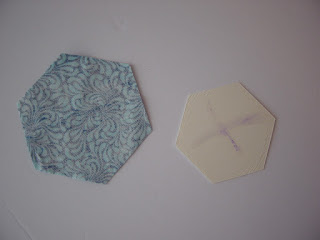How will we know the crafts we enjoy, will survive another generation. We inspire the children of today. They learn about the pioneers, how they had to make do. How patchwork, was used in everyday living to keep them and their families warm. Clothing would wear, the bits that could be salvaged was used to create blankets, quilts. They did not have access to fabric like we do today. Nothing was wasted. Similar to recycling plastic, paper, fabric was given a new lease on life, in the past.
Hexagons was pieced together. They date back to the 1700's in England. Pieced and Applique quilts arrived and thrived. When crazy patchwork came on the scene, it was used to its full potential. Embroidery could be practiced on it, as the fabrics used to create it was mainly plain fabrics.
The quilts which survived, today is housed in museums. These are all in the book, Quilt Masterpieces.
All young women had a hope chest. In this she would create items which would go with her when she left home to be married. She would make 13 quilts, the last one would be her wedding quilt. This is the one, which all the ladies of the church would help her quilt, after church on a Sunday, just a short while before she got married.
A Log cabin quilt, with red centers, to show the hearth of the home.
After church on Sunday people would use this time to socialize, as it was sometimes the only time they got to do so. Most of the pioneers had farms and worked long hours to carve out a living and a future for themselves.
Thank You to the amazing Grade Three Classes who invited us to share, what we love to do!

























































